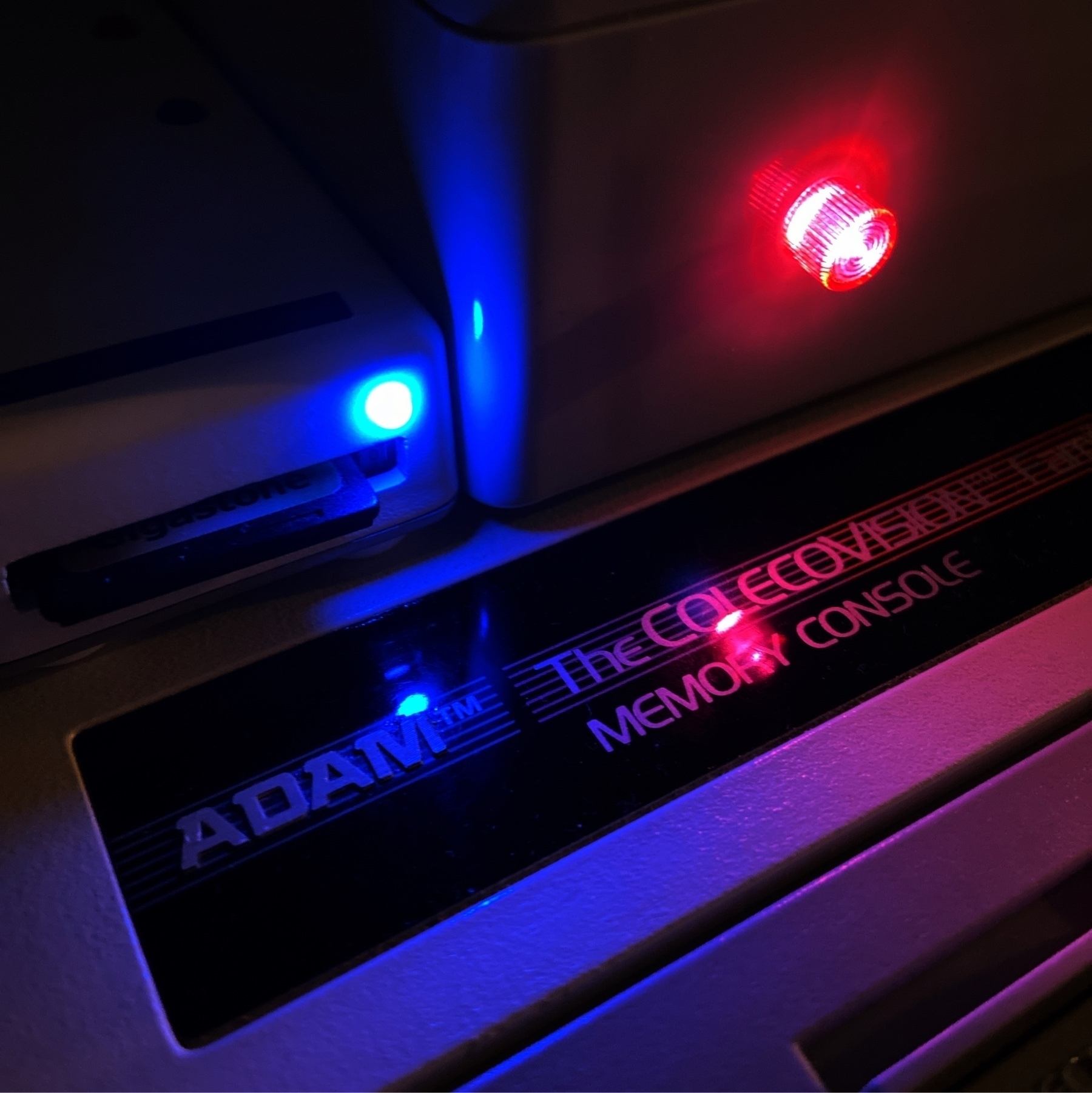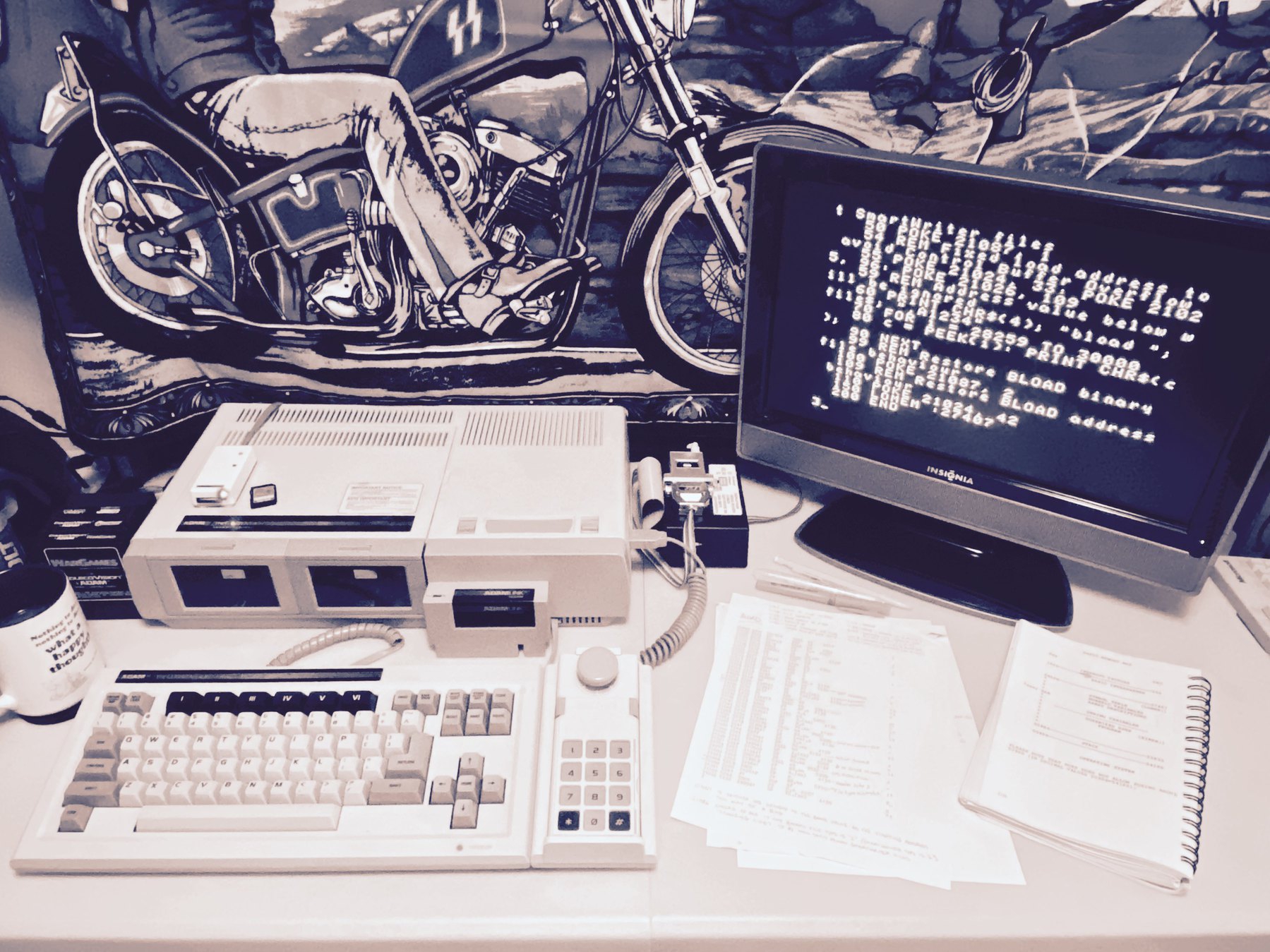📰 Start spreading the news: February will henceforth be known as #FebruADAM! https://youtu.be/wbnuFhvUaYY #ColecoADAM
Attention ADAMites: William “Milli” Hicks is launching a new YouTube channel completely dedicated to the #ColecoADAM! Milli really knows his stuff so this is a channel you’ll definitely want to watch… subscribe today! ☑️🔔 https://youtube.com/channel/UCcOPctXP788CkTiQR_9CtWQ
🕹 Played “Alcazar” on #ColecoADAM for the first time today. Spent way more time playing it than I intended to… a sign of a great game! 👍
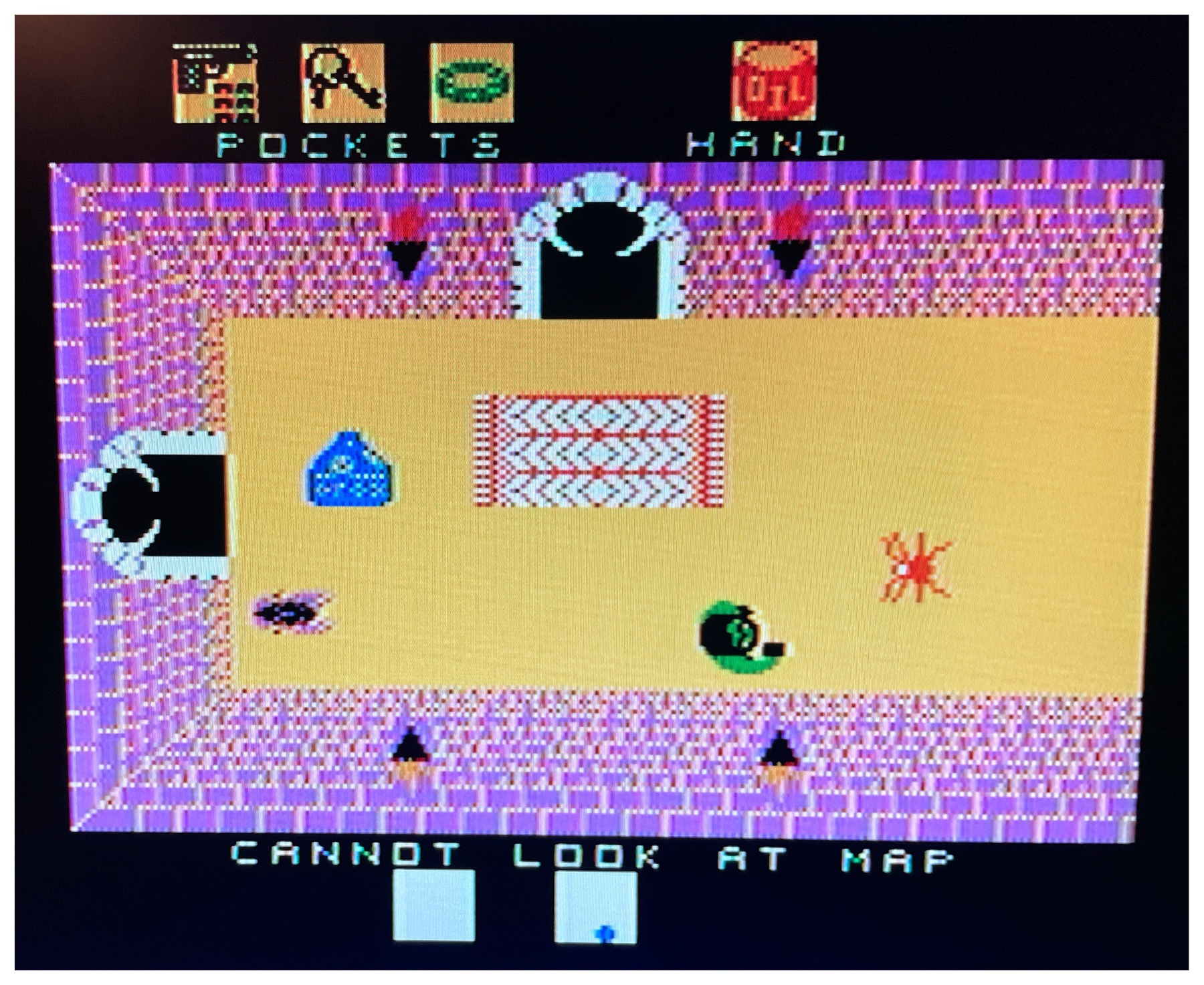
Here Comes The MIB! 😎
No, not the Men In Black.
I’m talking about the new MIB238 (Multi-purpose Interface Board) for the Coleco ADAM! The MIB238 is an incredibly versatile expansion card that installs in slot #2 and provides ADAM with these amazing features:
- 2 RS-232 serial ports
- 1 parallel port
- 1 boot PROM socket
- 1 memory expansion addressor
All of that functionality is packed onto one elegant board. To make things even more incredible this board doesn’t require any external power source… it is completely powered by the ADAM itself. You can see why I consider this to be the holy grail of ADAM expansion cards!
The MIB238 was created by Eric Pearson. Eric is one of the most knowledgeable people in the ADAM community and his contributions are many (including the awesome SD-DDP drive). His MIB238 project is a modern redesign of the legendary Micro Innovations “MIB3” card. An original MIB3 card for ADAM is almost impossible to find these days (I’ve tried!) so a new card offering 100% compatibility with the original is a true godsend. You can find Eric’s project on GitHub. I was personally thrilled when Eric announced it because it provides ADAM owners with a viable option for bringing their beloved computers online or connecting them to other peripherals like dot matrix printers or 80-column displays. The only problem (for me) is that the MIB238 is a DIY hardware project that is above my skill set. Enter John Lundy.
John Lundy consistently builds top-notch hardware for the ADAM. His tiny-but-mighty ADE Lite was one of the first things I bought when I got back into ADAM computing. His work is impeccable! So when I saw on Facebook that he would be putting together a small run of MIB238 cards I snapped one up in an instant. It arrived this week and it does not disappoint. Here’s a picture of it in all its glory:
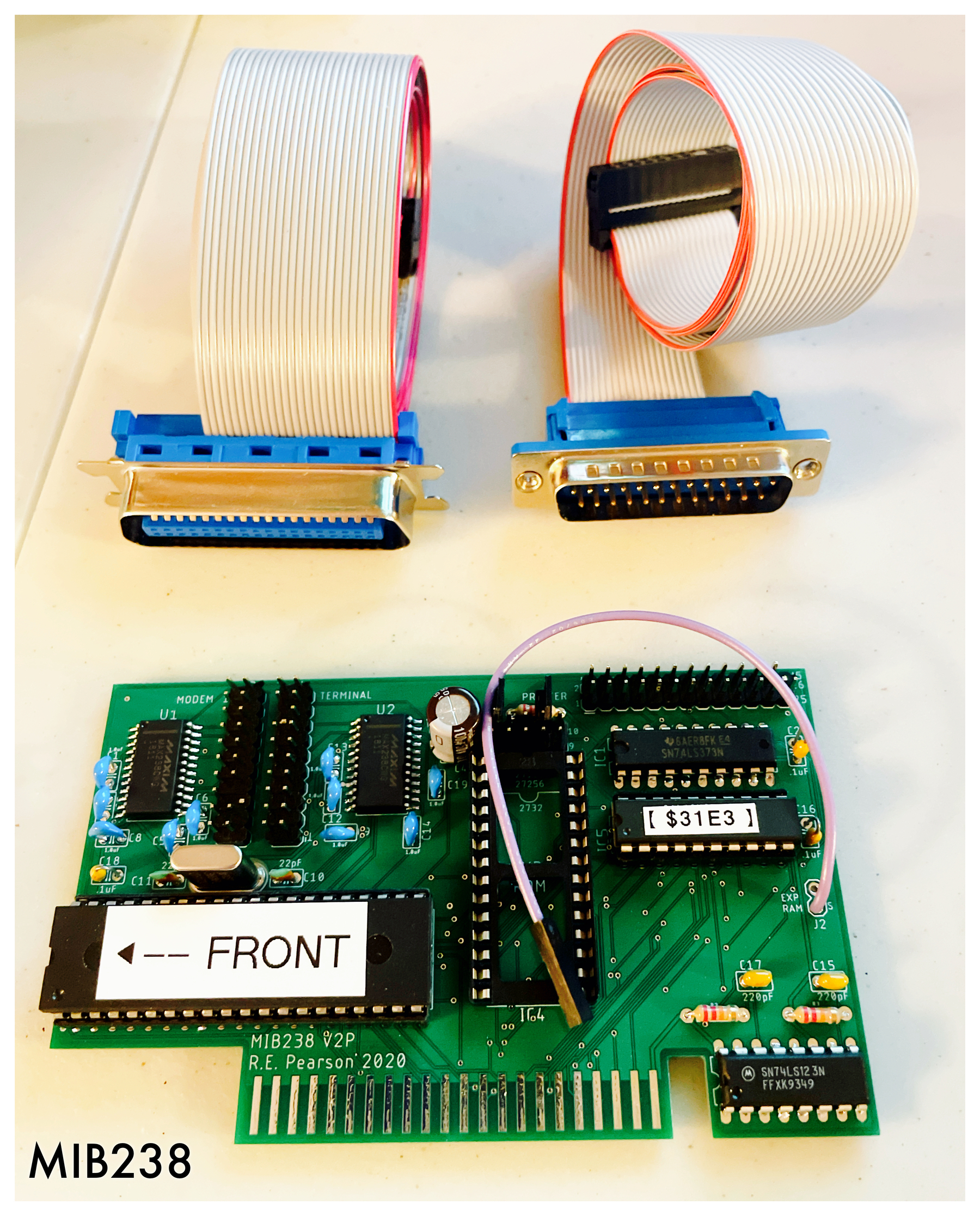
As you can see, I got one serial cable and one parallel cable with the card. I don’t currently have a dot matrix printer but I may get one some day so I have the parallel cable just in case. The serial cable will be connected to my WiModem232 to get my ADAM on the internet again since my external Orphanware/HLM-GLK serial device is (sadly) no longer operational.
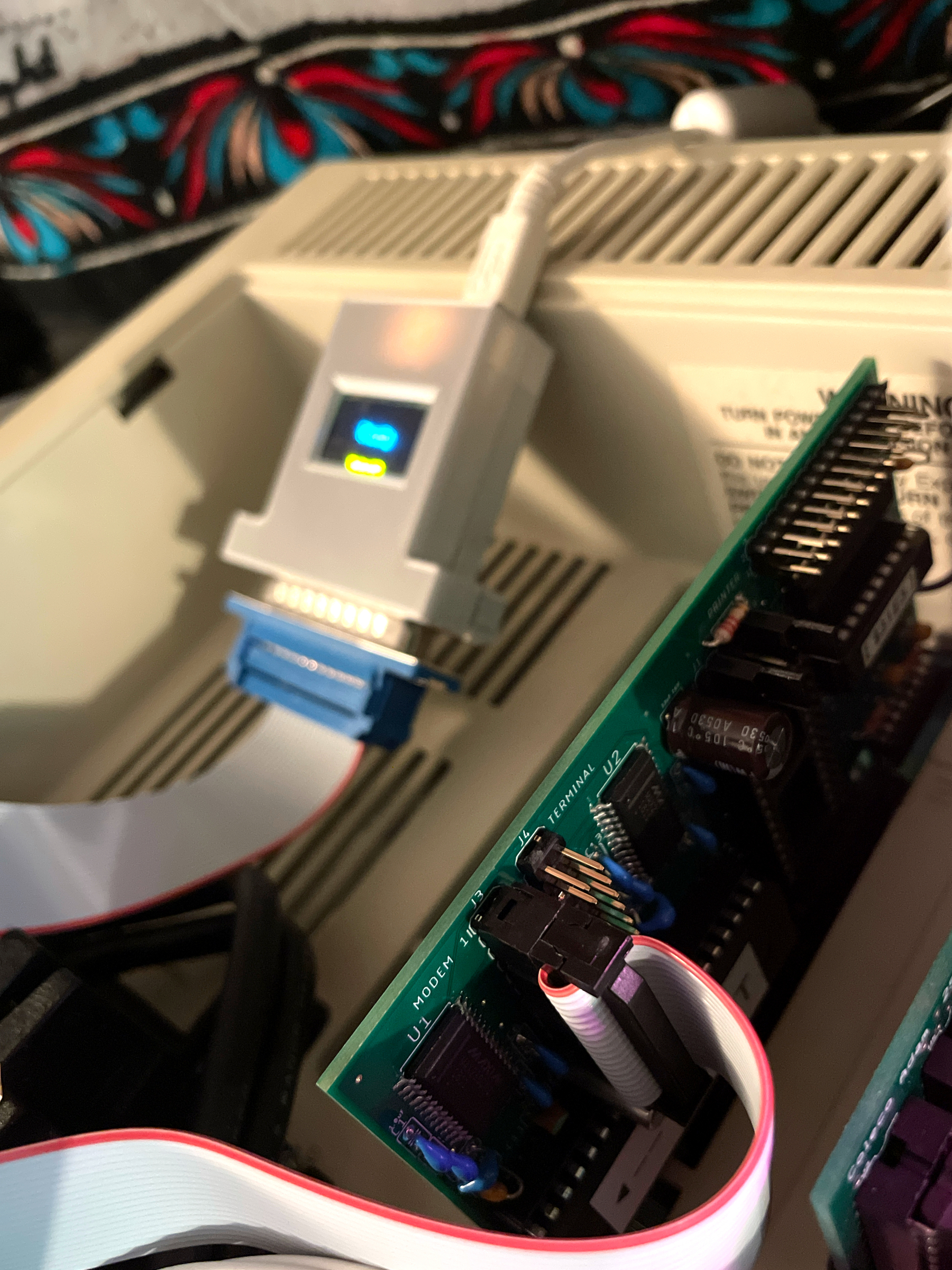
As I mentioned, the card installs in slot #2 which meant I did have to remove my dedicated RAM expansion addressor card. However, this was not a problem since the MIB238 includes an addressor connection wire which works flawlessly with my MicroFox 256K RAM expander.
The MIB238 card is simply an incredible addition to my ADAM and I really want to thank Eric and John for making it a reality!
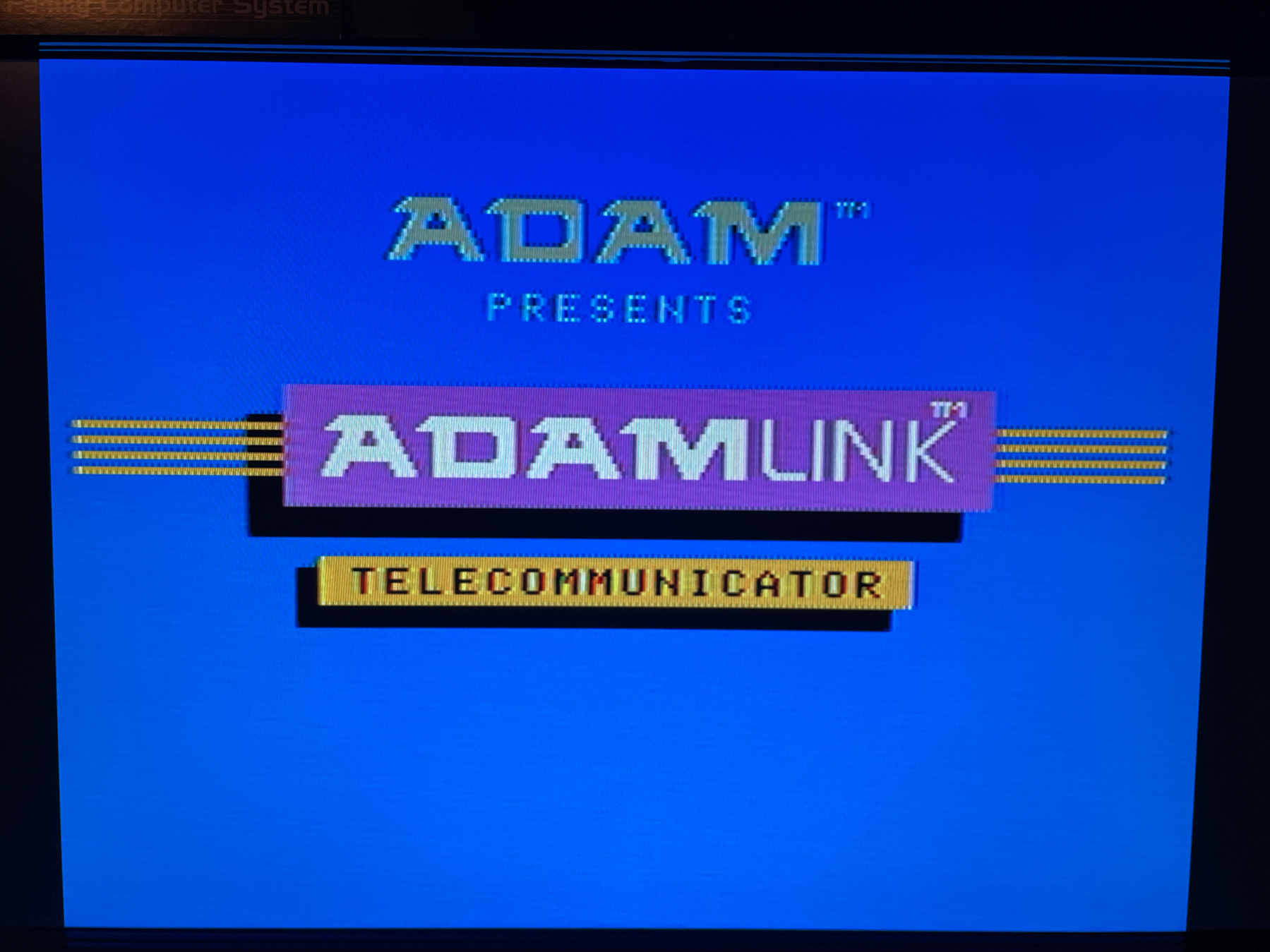
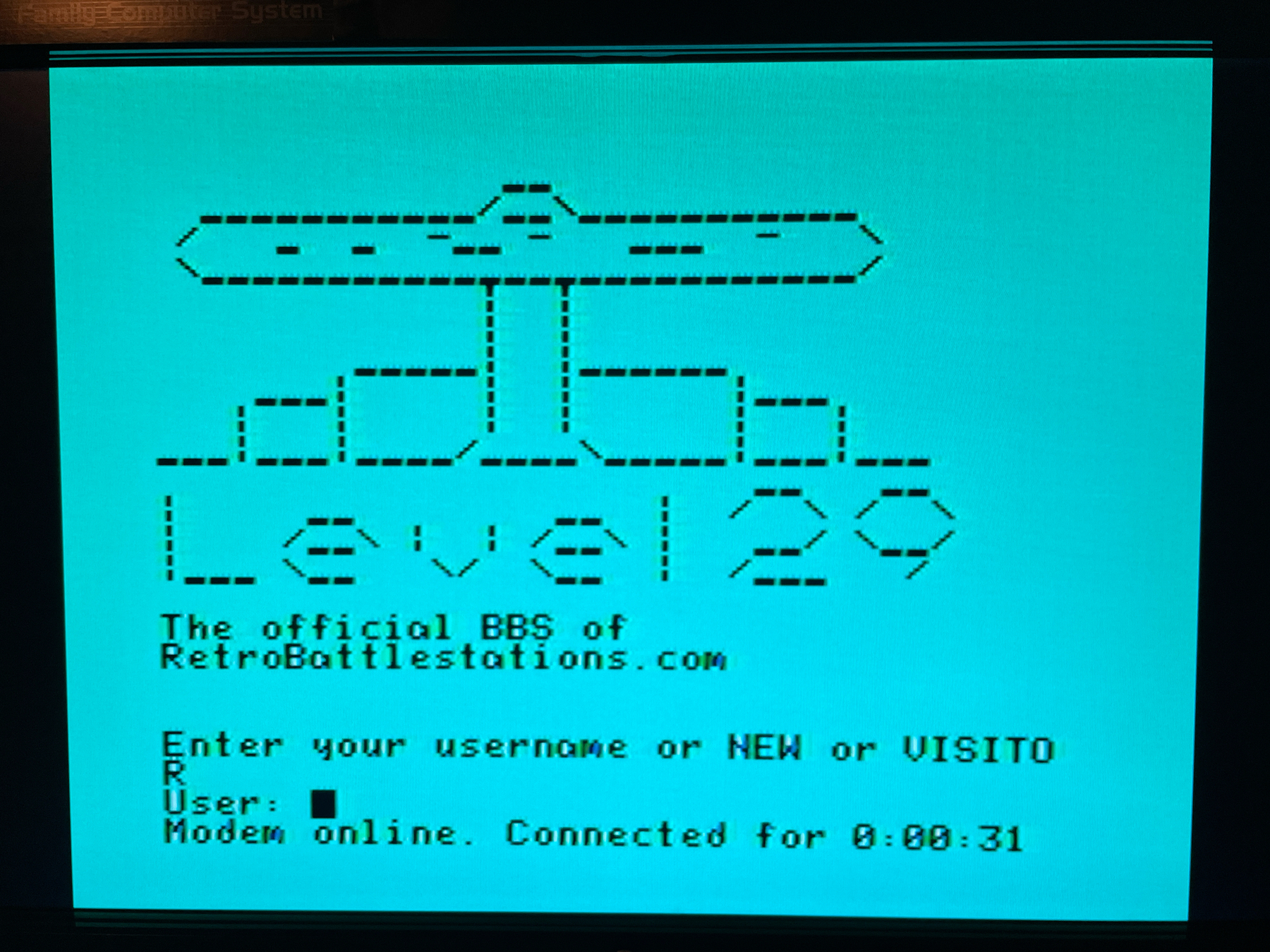
An Early ADAM Christmas Gift 🎁
It’s the first day of December and Joe Blenkle has gifted the ADAM community with the 2020 edition of the A.N.N. (Adam News Network) Christmas disk! Thank you to Joe for all the hard work he put into this. I even managed to get my name included this year! This is a wonderful 320K multimedia disk image with a slideshow featuring colourful Christmas graphics set to classic holiday tunes.
You can download it directly from Joe’s website or from the Coleco ADAM Facebook Group here. Joe’s website also has a collection of multimedia Christmas disks for each year going back to 1992! Run them on your ADAM today to start feeling festive! 🎄
Here’s a sneak peak of just a few of the graphics:

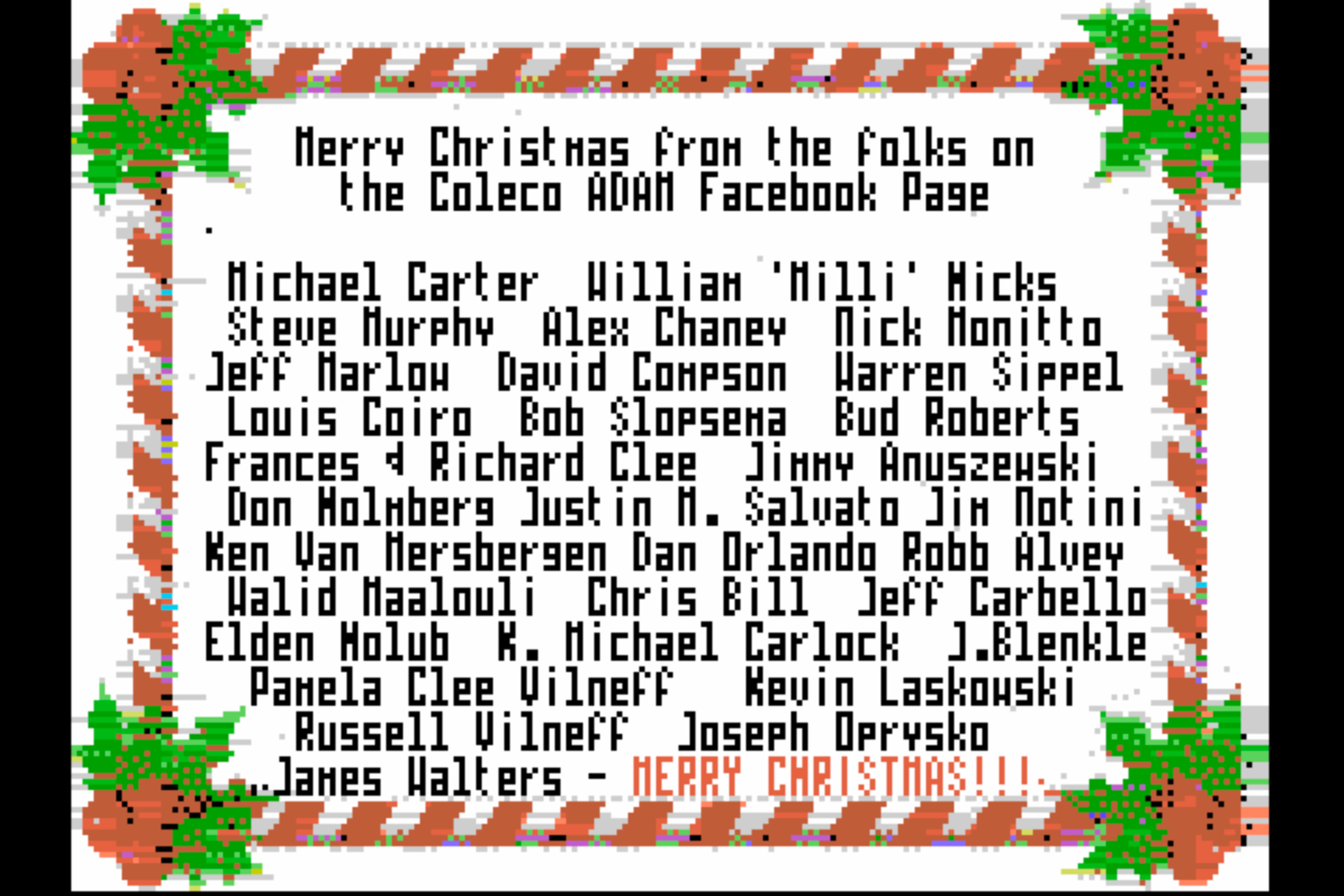
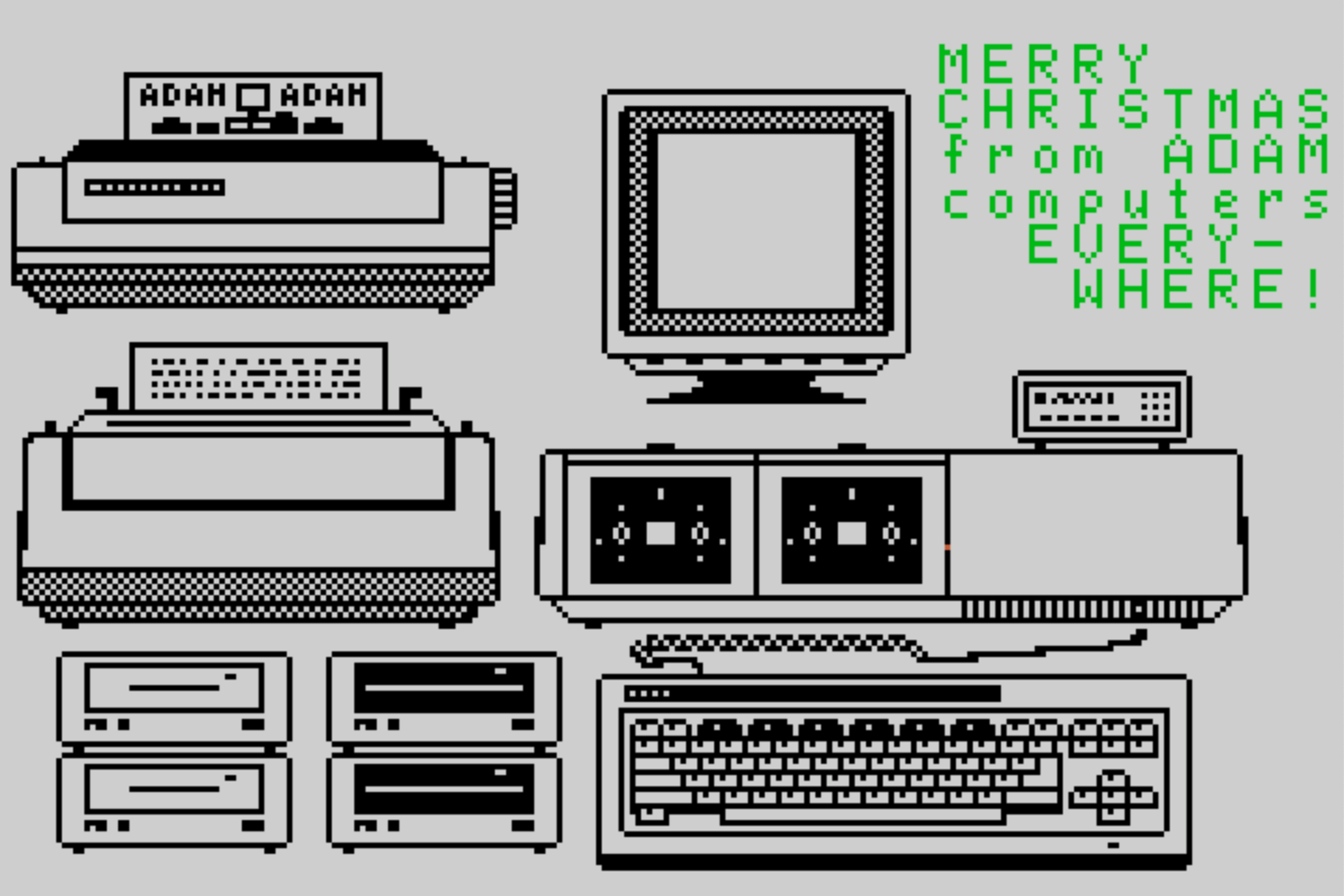
📢 If you’ve ever wanted one of the legendary Micro Innovations multi-purpose expansion cards (MIB2/3) for your #ColecoADAM, here is your chance! John Lundy has built a small run of MIB238 cards (based on Eric Pearson’s design) and is selling them via the ADAM Facebook group. GO!
UPDATE: All sold! 👐🏻
Learning more about the VDP and how to move data between RAM and VRAM using SmartBASIC and machine code. The Nibbles & Bits newsletter “Hacker’s Delight” section is always interesting! 🔰 #ColecoADAM
Playing with SmartLOGO… it’s surprisingly powerful. Lots of learning to do! Found out that I can dump the byte data of a LOGO shape and use it in SmartBASIC 2.0 for a sprite. 🐢
Serial (Port) Killer
This week I killed my ADAM. 💀
I was trying to fix a new issue I’m having where any software that tries to access the serial port is just echoing a series of “D” characters onto the screen. The problem is present in ADAMLink V (EOS) and Qterm (CP/M). My serial port device is an Orphanware/HLM-GLK model which attaches to ADAM’s side expansion port. However I figured out that it wasn’t a problem with my serial port because the behaviour persisted even when I had nothing attached to the expansion port.
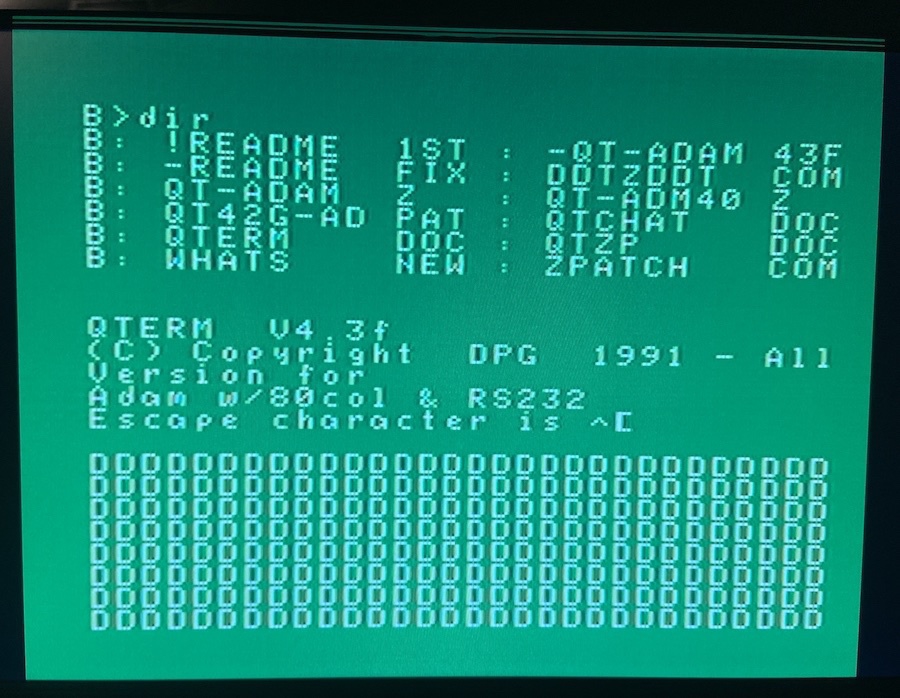
I posted about the problem on the ADAM Facebook Group and it was suggested by James Notini that I try connecting my Atari 2600 adapter (ColecoVision Expansion Module #1) to see if its a problem with my expansion port. The Atari adapter worked just fine so I had a bit of fun playing Asteroids while I decided on my next course of action.
I tried removing my memory expansion card. No difference. I tried disconnecting each of my data drives. No difference. I tried using the printer power instead of my new external power supply. No change. Milli suggested disconnecting the keyboard while the “D” stream was appearing to see if it was a keyboard glitch. It wasn’t. At a loss, I decided I would dismantle ADAM to clean out any dust as well as inspect the boards and see if any wires or chips were loose.
This was the first time I had taken ADAM completely apart, removing all the metal shielding (of which there is a lot) and getting right down to the boards. It was kinda fun but a little nerve-wracking as I started to panic that I wouldn’t be able to put it back together again. After all, this is my one and only ADAM computer! 😬
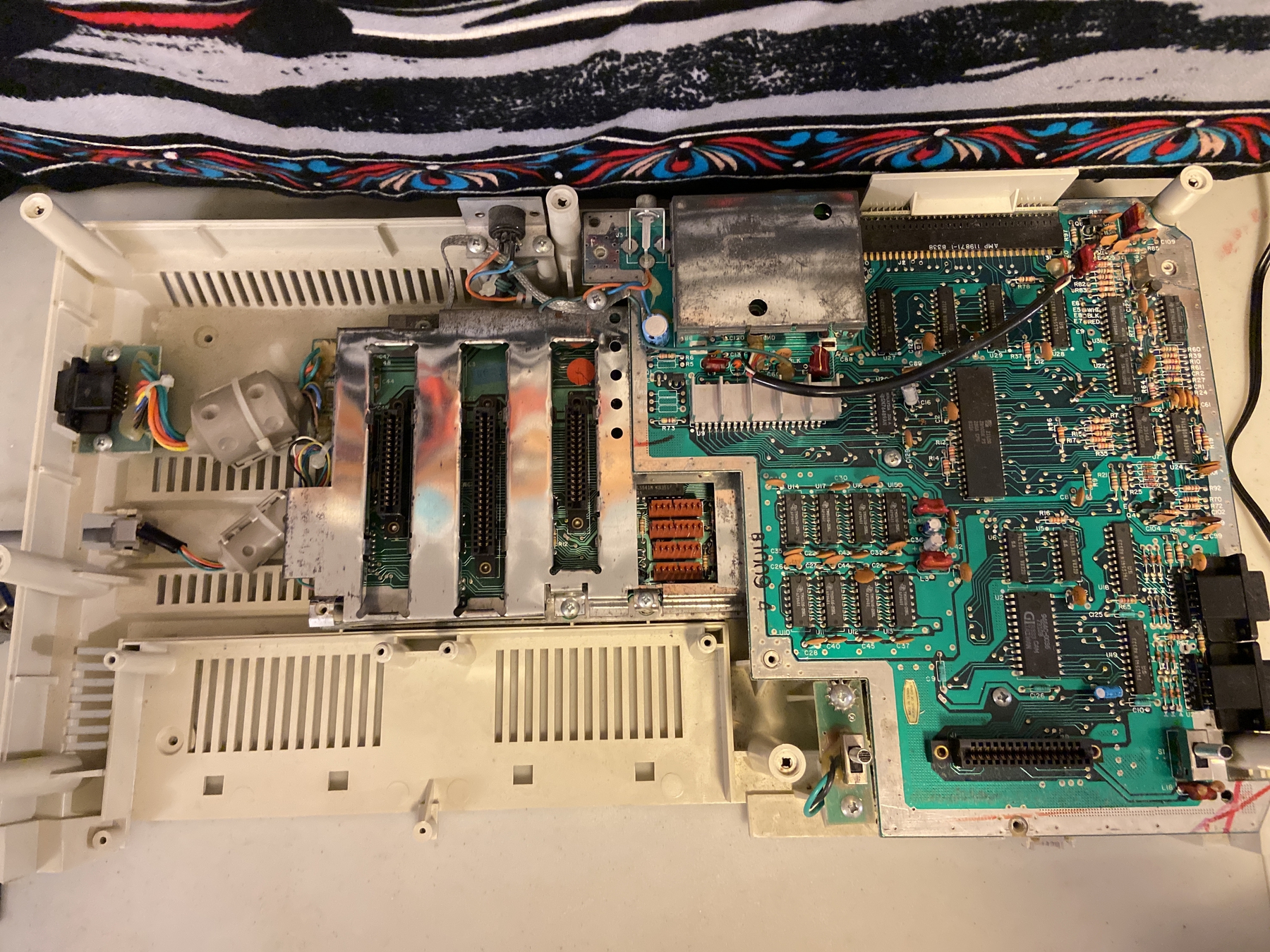
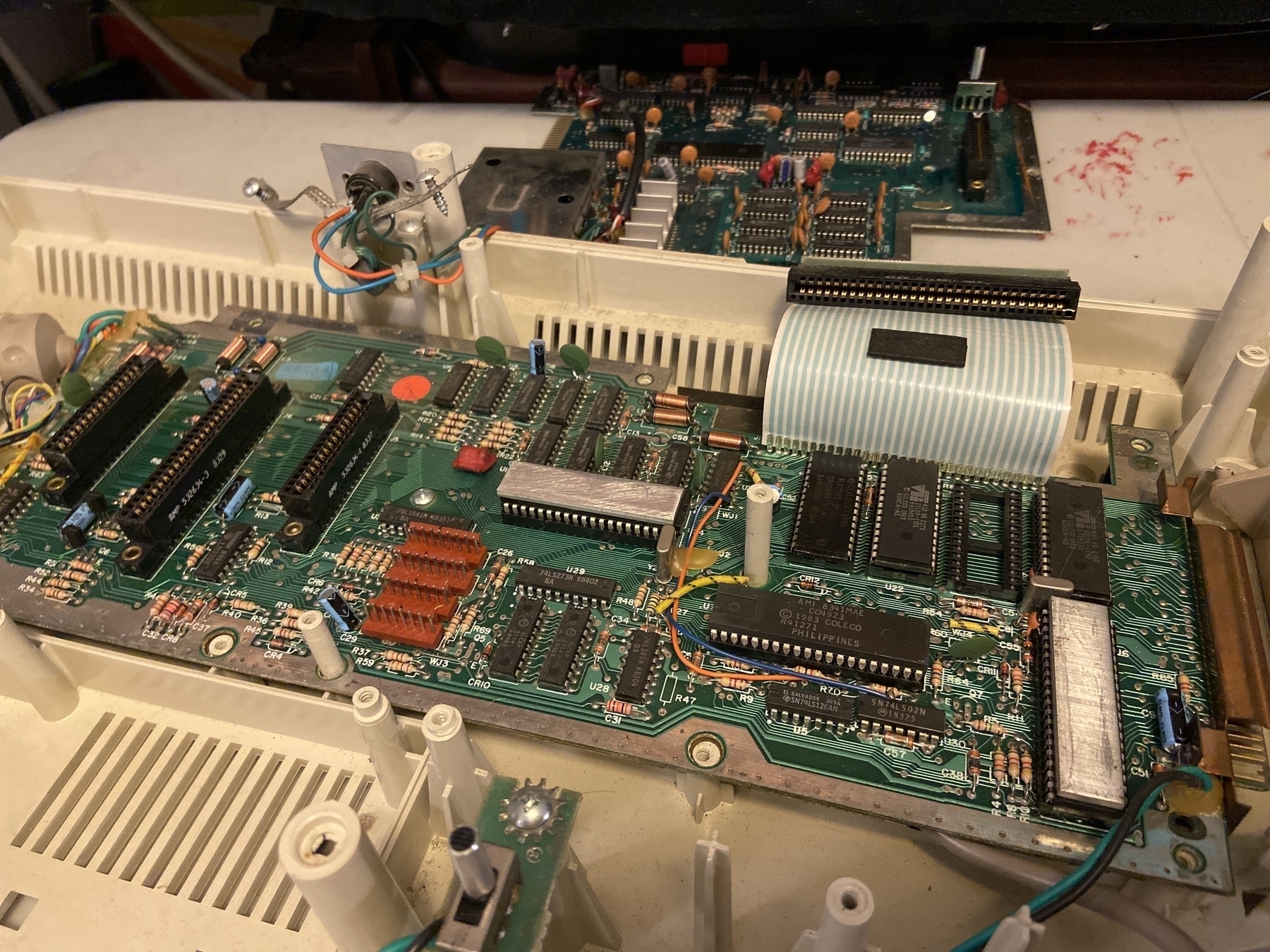
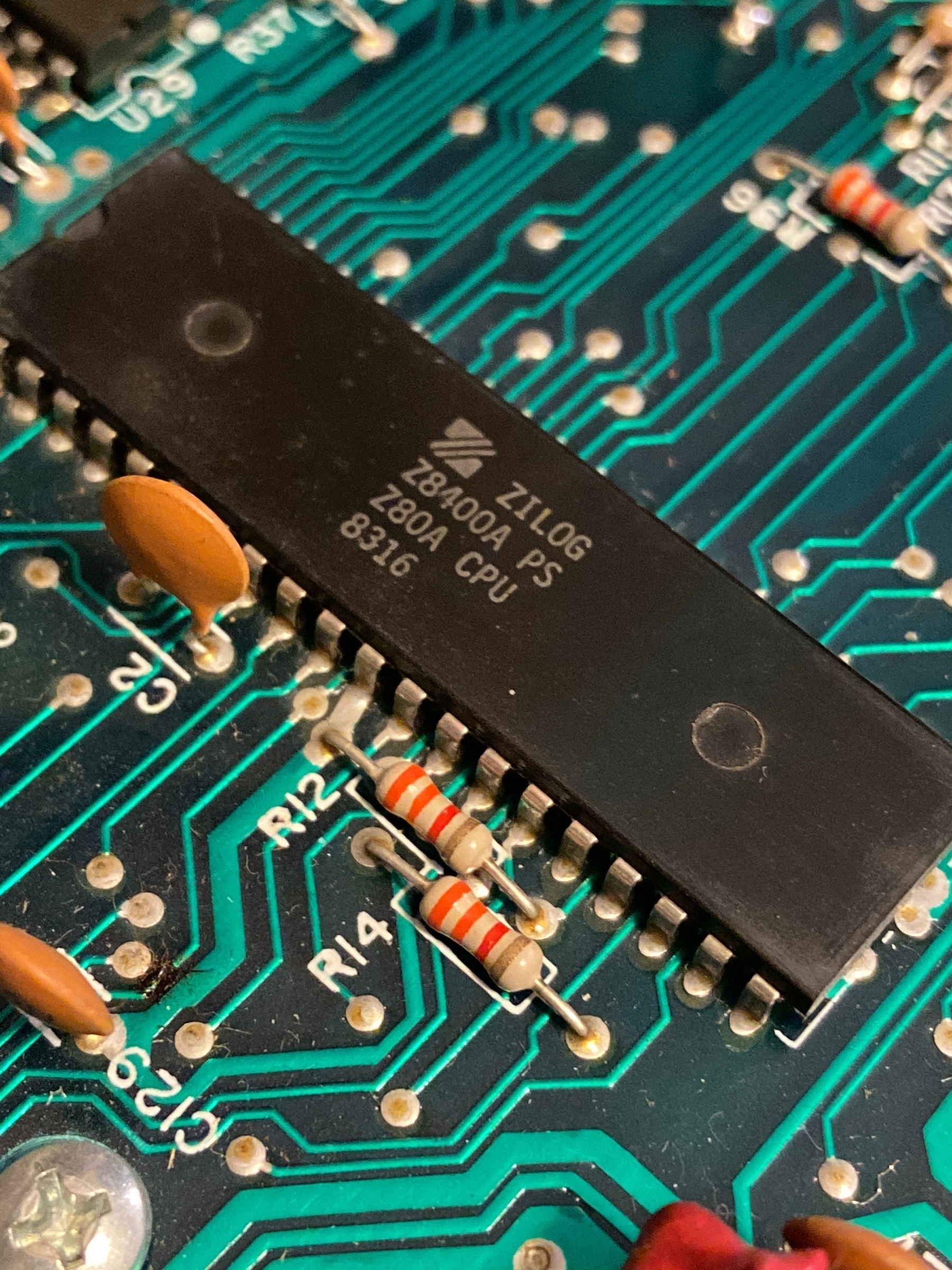
After cleaning out the dust with compressed air and inspecting the boards I put ADAM back together again and booted up… to a blank screen. A blank screen with a steady sound being emitted to be exact. 😱 What had I done wrong? I must’ve missed reconnecting something. I didn’t have time to take it all apart so I had to leave it for a couple of days until this morning when I made my attempt to bring ADAM back from the dead.
I was methodical. After each part I disconnected I would try to power up ADAM and see if the screen stayed blank. It was when I removed the top metal shielding from the ColecoVision board and powered up that I was finally greeted by ADAM’s familiar word processor. 🎉 I breathed a huge sigh of relief! I discovered that one of the screws was making contact with the shielding above and the shielding below the CV board which was causing the problem. I removed the top shielding, re-assembled, and I was back in business! Did a RAM test and diagnostic and everything looks good.
Unfortunately the orginal “D” stream serial port problem that started this misadventure still haunts my ADAM 👻 but for now I am just happy to have him alive and functional again!
Homebrew Hardware from the ADAM Community
Some new ADAM hardware goodies arrived this week!
I am thrilled to be one of the first people in Canada to get my hands on the awesome new ADAM SD-DDP drive! The SD-DDP drive uses SD cards and .DDP (Digital Data Pack) files (readily available on the ADAM Archive) to perfectly emulate an original ADAM Digital Data Drive. ADAM treats it just like a real DDP drive so it doesn’t need any software drivers… a true thing of beauty!
The SD-DDP project was originally created by Eric Pearson who generously shared all of the details on GitHub. Hardware guru John Lundy was able to use Eric’s plans and code to produce a beautiful professional-quality, user-installable device which he then made available for sale to all members of the ADAM community via the Coleco ADAM Facebook Group.
The second piece of hardware that arrived at my door this week was built by none other than ADAM legend James Walters (of Walters Software Co). It is an external power supply that negates the need to keep my aging SmartWRITER printer connected. The power supply is well built and looks fantastic as it perfectly complements ADAM’s memory console.
Check out the pictures! The ADAM community is very fortunate to have such incredibly knowledgeable, generous, and talented folks in its ranks.
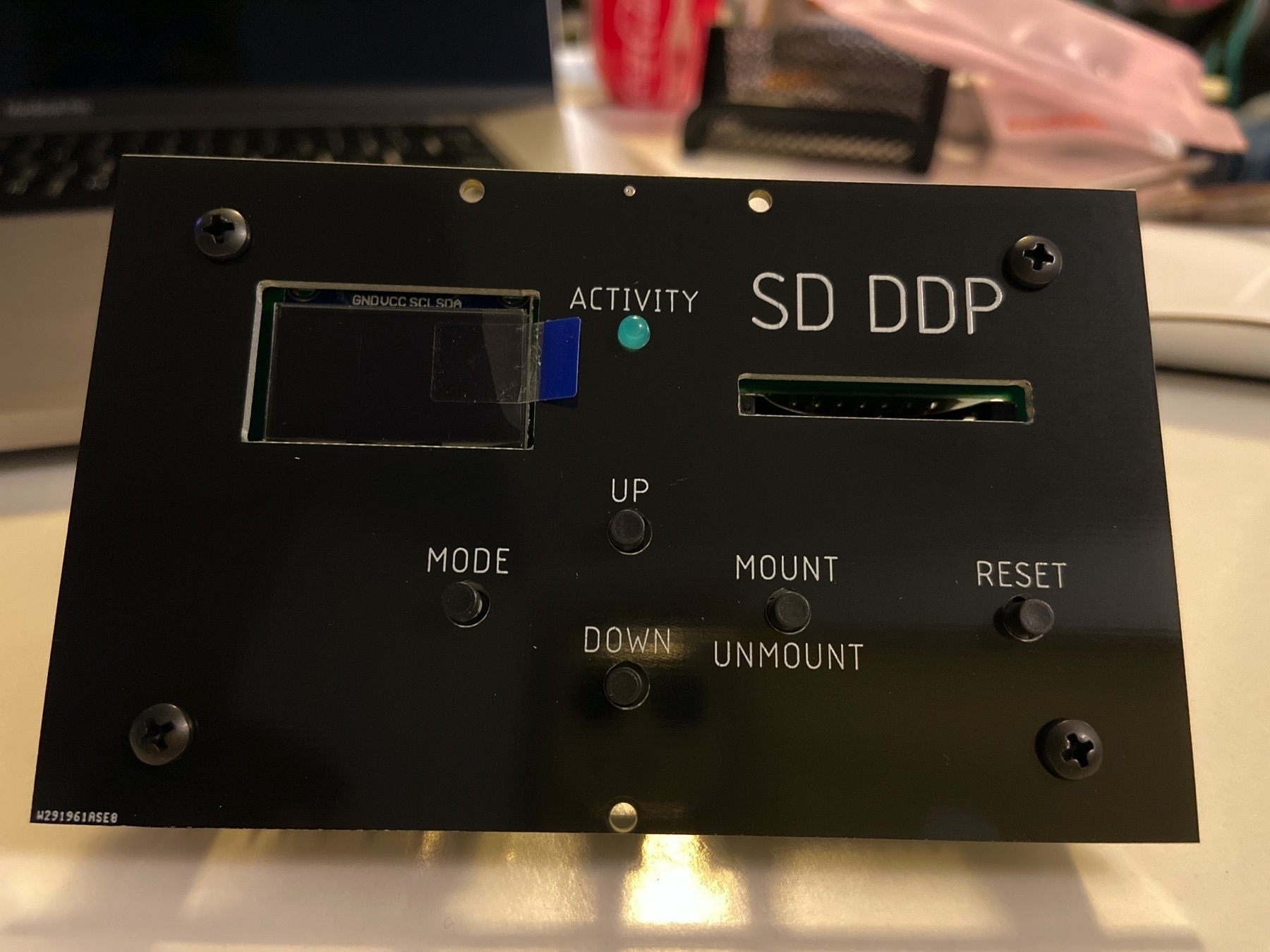
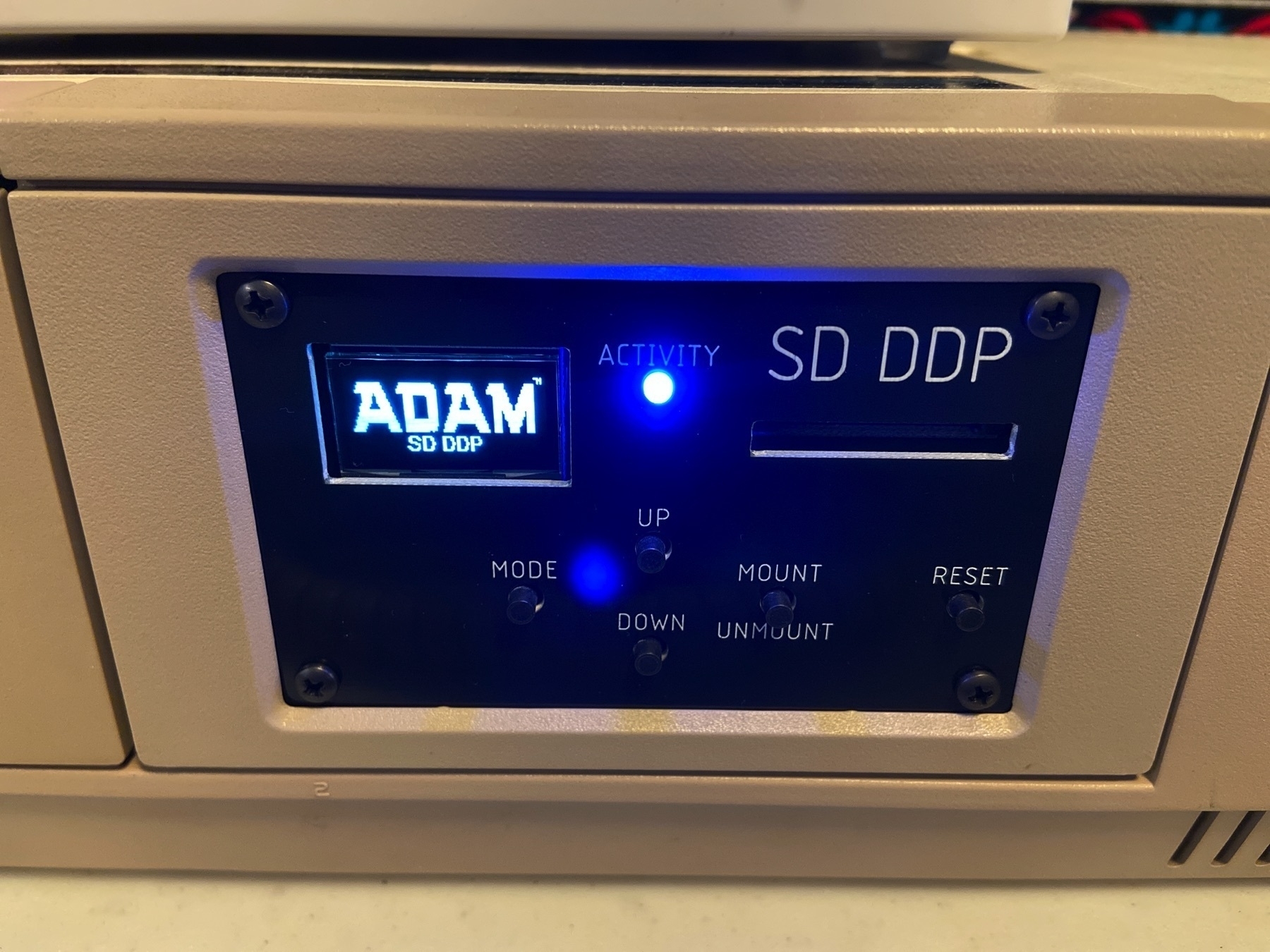
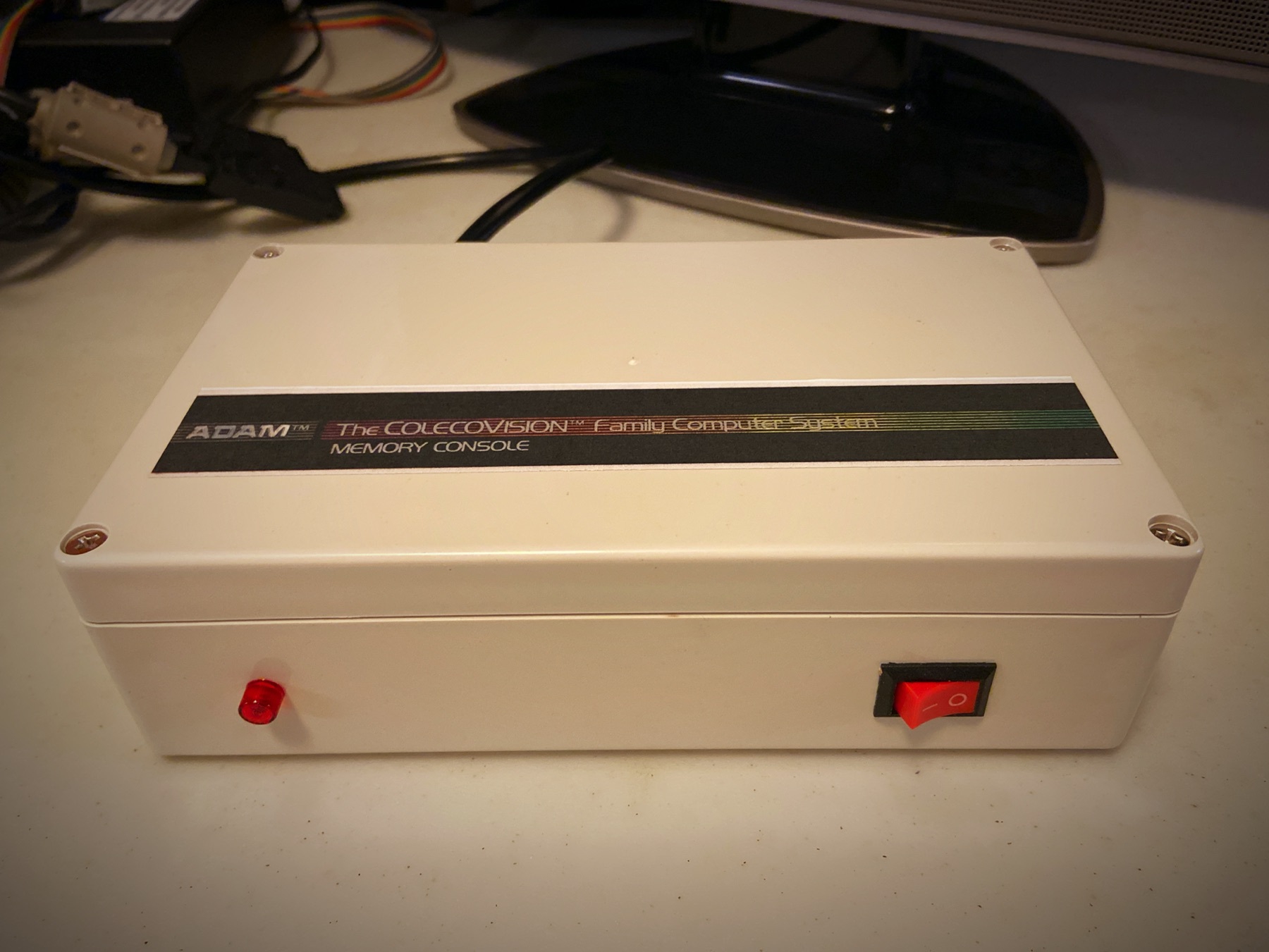
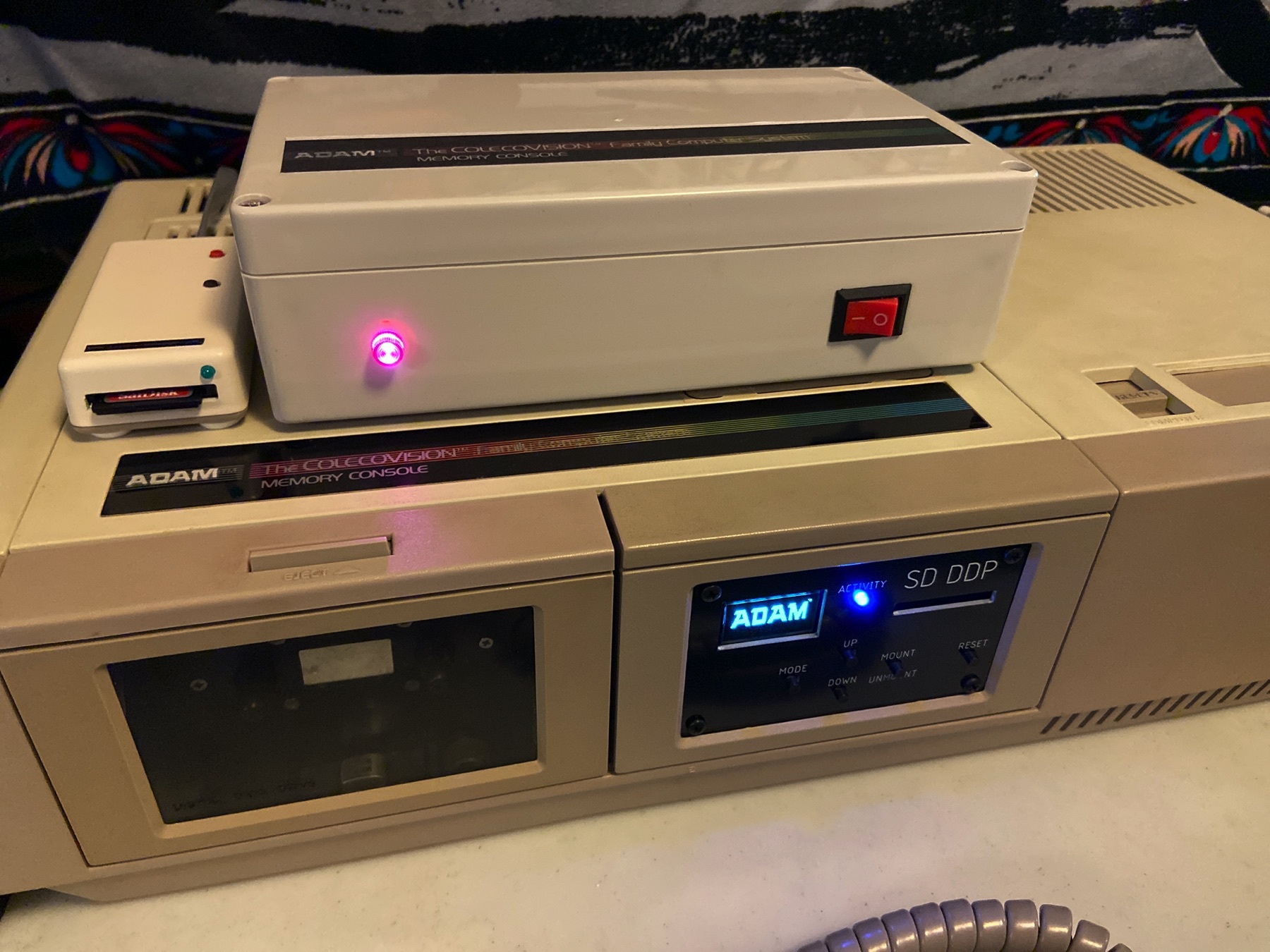
Reading the Nibbles & Bits newsletter and learning about the #ColecoADAM VDP (Video Display Processor) by mixing some machine language with SmartBASIC! 🤓⌨️
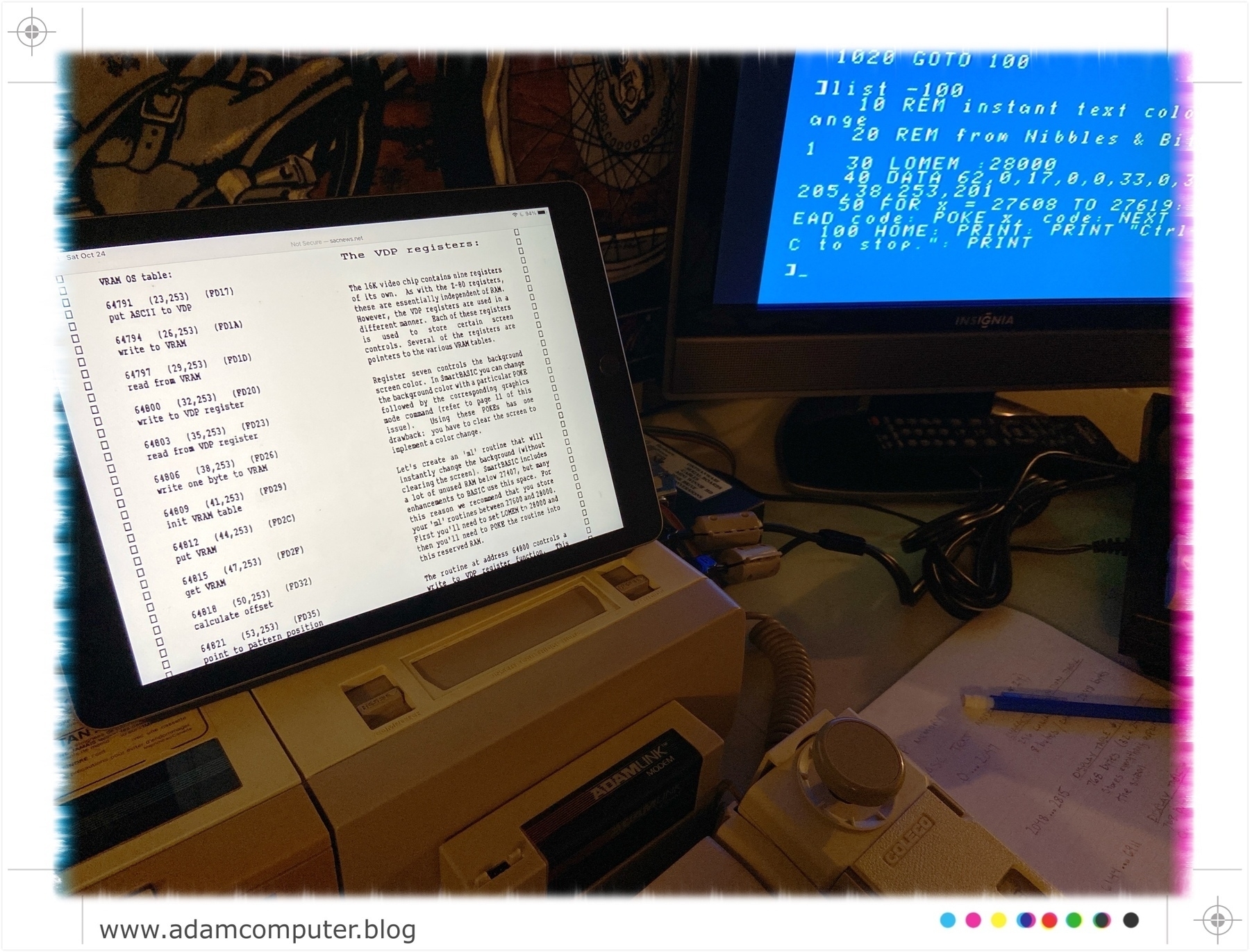
Here’s your chance to support the indispensible ADAM archive and get a free car window sticker to show your ❤️ for the #ColecoADAM. Act now, limited quantities available! #RetroComputing ➡ http://adamarchive.org/donate.php
60-Column Text Demo
I was checking out some of the demo programs on DEI’s FontPower disk and I came across one that featured 60-column text. It uses the shape table to store the characters which is a really cool technique. Seeing how legible it was made me think it’d be great for a communications program so I modified the demo program and came up with this. Not sure if I’ll finish it but it sure would be nice to have.
Turtle Talk with SmartLOGO
Believe it or not I’ve never tried SmartLOGO before! I vaguely remember being at a friend’s house back in the 80s when he showed it to me and said he could make games with it. I’ve got the manual here so I’m going to have some fun going through the tutorials and see what I can do with it. 🐢 Turtle Power!
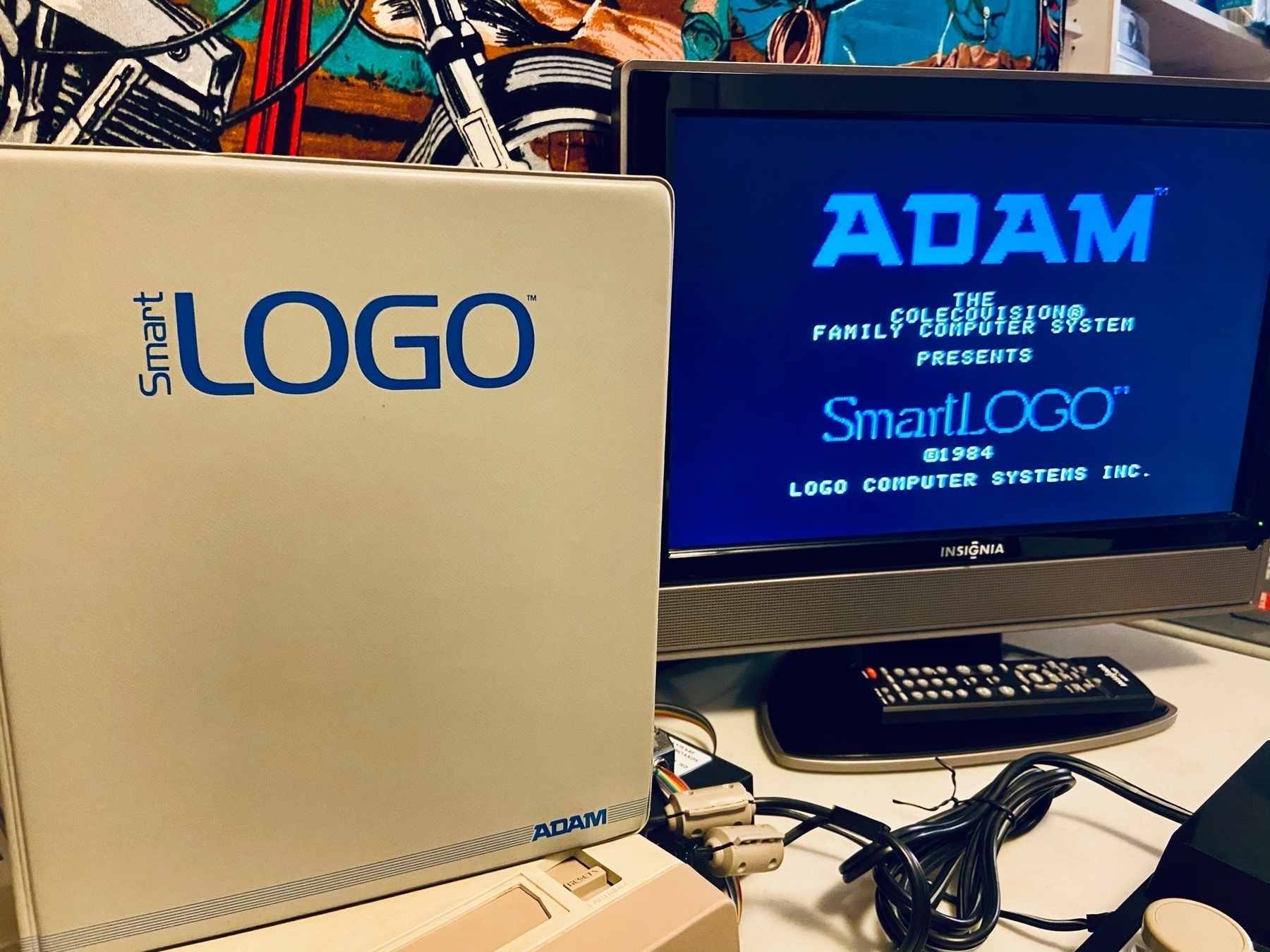
🚨New hardware alert! Got a 🖲 ColecoVision Roller Controller in great condition from my new friend James at crt-international.com. I love it! Definitely adds some arcade authenticity to games. Took me right back to playing Centipede in the arcade. Good times! 🎮🕹 #ColecoADAM
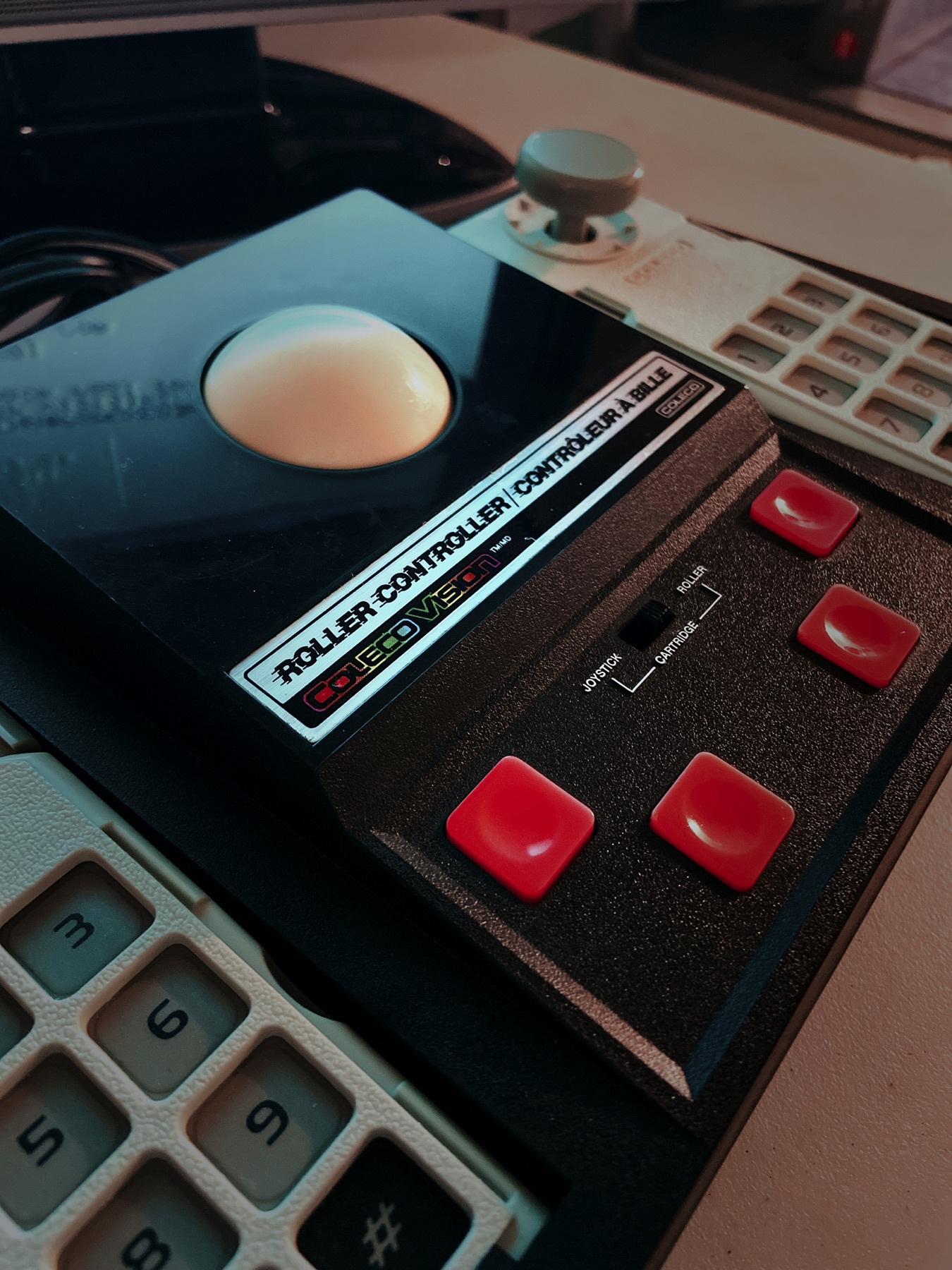
🌈 Spent time this morning in BASIC trying to produce “rainbow” text (a string with each character having a different colour all appearing on the same line). It’s not as trivial a task as it would seem to be! More experimentation is required. Excellent. 😄 #ColecoADAM
A New Coleco ADAM Book!
I recently got a new book called “Programming Games For The ColecoVision and ADAM in Assembler” by Tony Cruise. Yes, it is still 2020 and yes, there is a new book about ADAM programming! Of course I preordered this book as soon as I heard about it and it was released at the end of August as a digital Kindle book. You can get it on Amazon now or if you prefer a printed physical version you can preorder it here.
I’m already nine chapters into it and I’ve been enjoying it so far. The only unfortunate thing (for me) is that the workflow described in the book is Windows-centric and these days I use a Mac (when I’m not using my ADAM 🙂). This didn’t slow me down too much though as I already had a working virtualized Windows 10 installation on my Mac using VirtualBox before I started the book.
If you’re interested in creating games for ColecoVision or ADAM or maybe just interested in learning some Z-80 Assembler then I highly recommend checking out Tony’s book! There is a thread on the AtariAge forum where the author is active so you can discuss the book and ask any questions you may have.
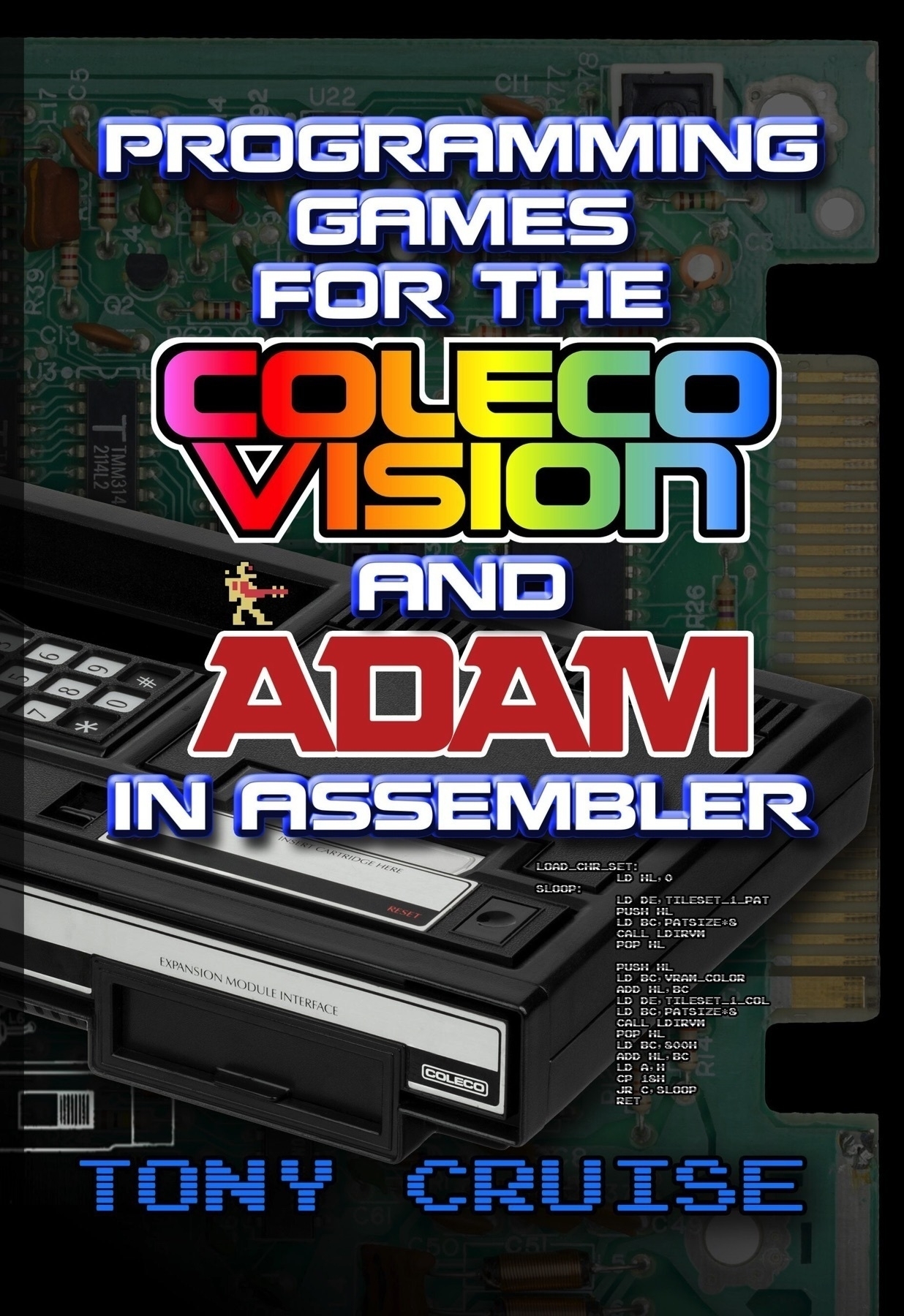
Tweeting from ADAM?!
Yes, it is possible to send a tweet from the ADAM! I did it this morning with the help of the RetroBattleStations Level29 BBS. Check out my tweet on Twitter.
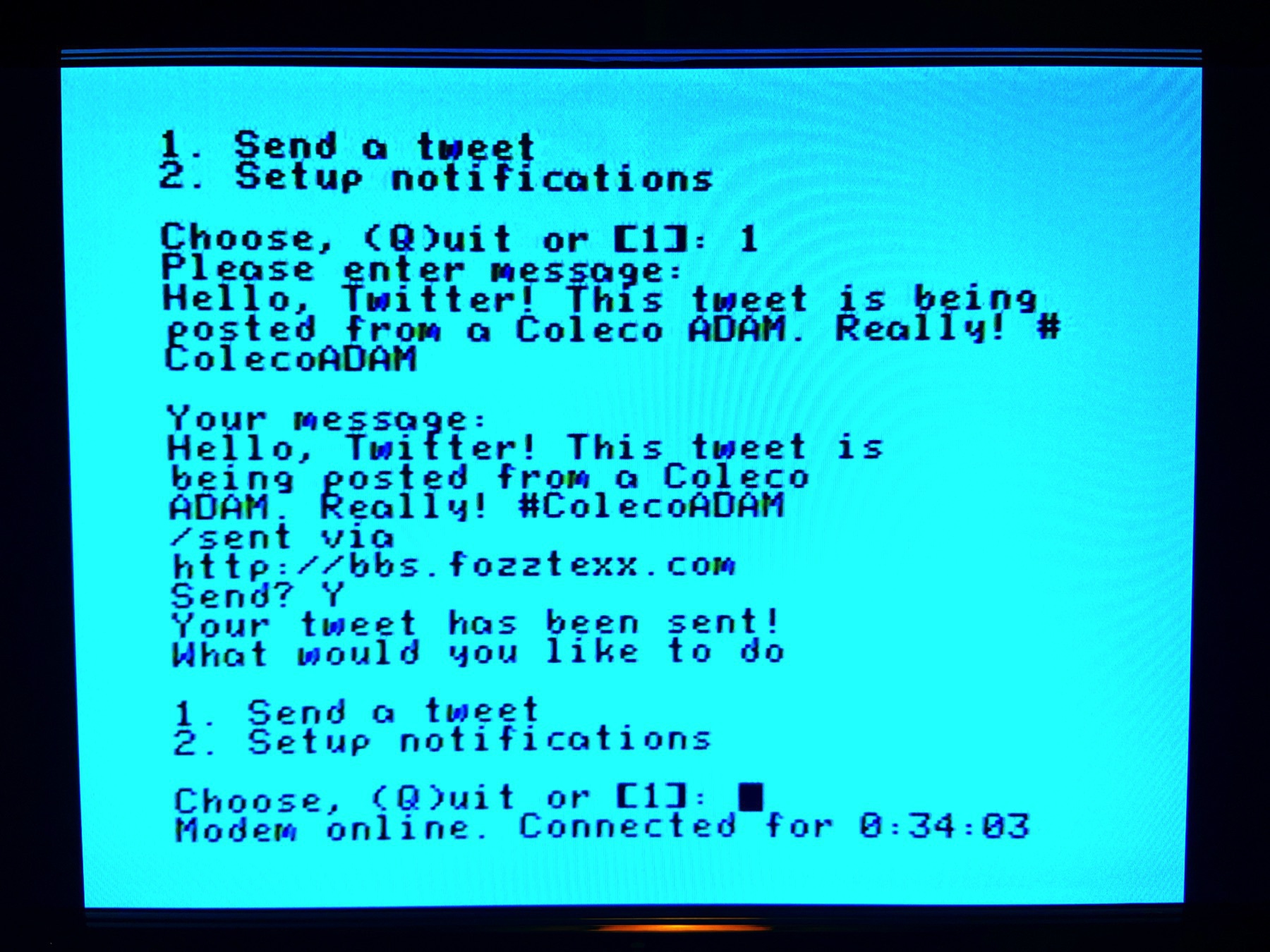
BASIC SmartWriter File Viewer
I’m happy to announce that this weekend I was able to complete and release my SmartWriter File Viewer BASIC program.
This has been a really fun project and the end result is a utility that I will personally get a lot of use from. One of the main reasons this project was so fun was that it involved disassembling SmartBASIC’s BLOAD routine and modifying it to do what I needed. I haven’t had much experience with assembly language so this gave me a chance to dig in and learn. I used the disassembler included with the legendary Hacker’s Guide To The ADAM. The Hacker’s Guide Volume 2 was also incredibly helpful as a reference for this project. Without its section on Tape Routines I don’t think I would’ve been able to do this at all. Huge shout-out to Peter and Ben Hinkle for writing these awesome guides back in 1985/86. The other book I used as a reference was “Programming the Z80” by Rodney Zaks which I’m sure I’ll be returning to again and again.
As I mentioned in a previous post the main thing I needed to do was get the BLOAD routine to accept SmartWriter files. After reading through the assembly code I found what I was looking for here at 21083:
21083 525B 3A9641 LD A,(nn) 4196
21086 525E FE02 CP n
21088 5260 C2255F JP NZ,nn 5F25
Just before these instructions the routine loads the file header into memory location $4194. So the first line above is looking at the 3rd byte of the header (the file type) and the second line is comparing it to the value 02. If it doesn’t equal 2, the third line jumps to an error display routine (File Type Mismatch). In ADAM’s EOS, binary files have a file type of 2 whereas SmartWriter files have a file type of 1. Therefore all I had to do was modify memory location 21087 to contain the value of 1 like this:
POKE 21087, 1
Eureka! That was enough to get BLOAD to accept SmartWriter files. As a bonus, the routine would now neatly reject other binary files that would obviously be incompatible with my viewer program. Once I had this in place I started to figure out more of the routine and how it worked. There are some other modifications I had to make before I was done but this one was definitely the key. You can check out the rest of the changes and the entire code if you’d like by downloading the disk image over at the ADAM Archive.
Connection Established
I finally have a serial port for my ADAM! A special thanks to rietveld and adamcon over at the AtariAge forum for helping me find one. I got an external unit that connects to the memory console’s side expansion port.
I’ve had a WiModem232 ready and waiting for this day. Got it all set up and working perfectly using the awesome ADAMLink V terminal software and within minutes I was connected to a BBS just like the old days.
This is incredibly cool. It just blows my mind that my computer that was made way back in 1983 is now connected to the internet via WiFi. I highly recommend the WiModem232!
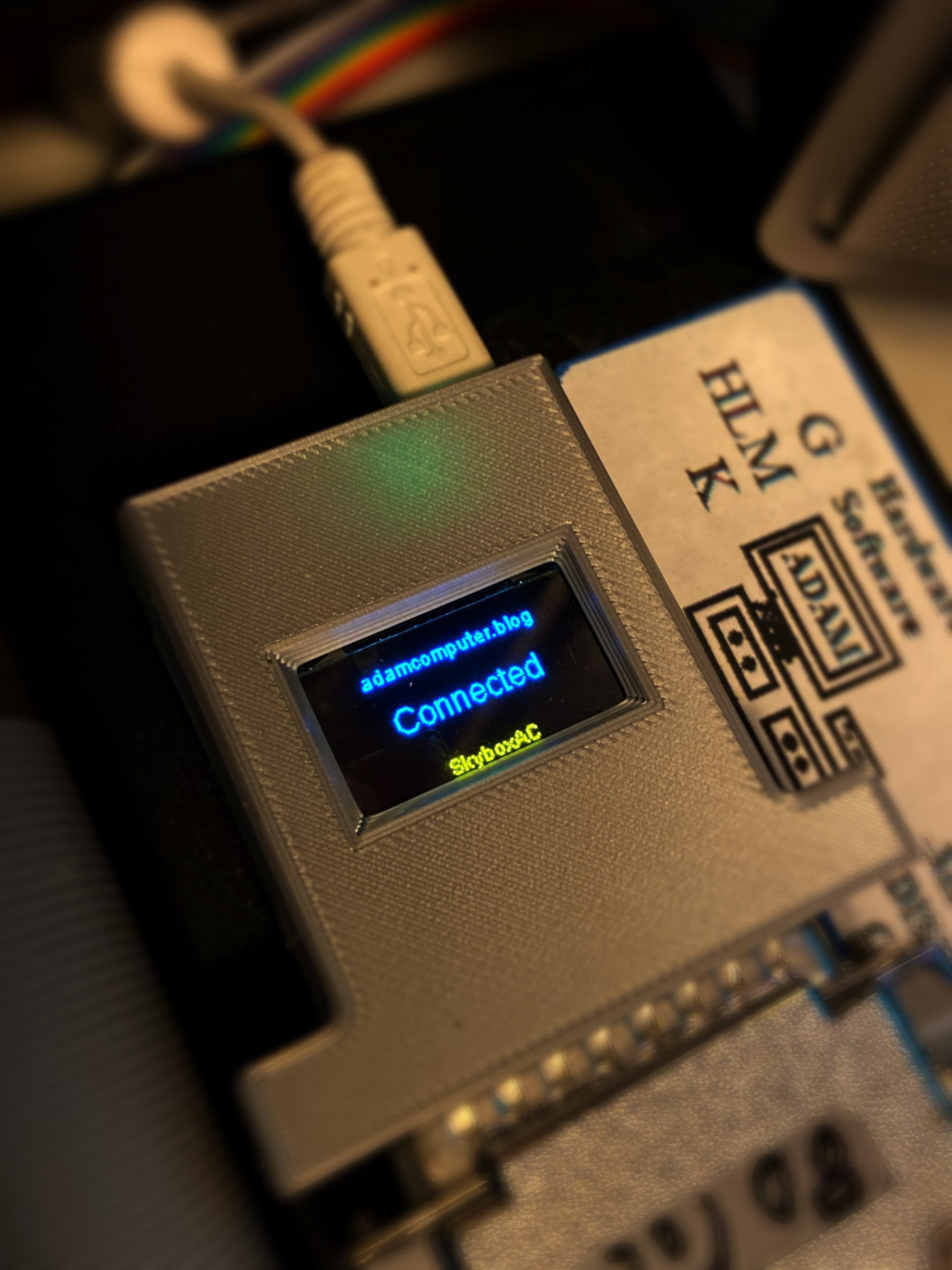
I printed out a disassembly of the BLOAD routine [$5201] and spent some time studying it last night. Despite my limited assembly knowledge I’ve been able to figure out most of it including the key to making BLOAD accept SmartWriter files. 🎉 Progress! #ColecoADAM #Z80
Beginning With BLOAD
I’m planning to write a BASIC program to view SmartWriter documents. It would come in really handy since many program disks include their documentation in this format and it’s inconvenient to reboot into the word processor just to read them. At first glance this seemed like a pretty simple program to write however the BLOAD command refuses to load SmartWriter files (although they are cataloged as type “H” binary files) for some unknown reason. The OPEN command only works with text files so that won’t work either.
One solution I’m considering is modifying the BLOAD routine in memory so it will accept SmartWriter files and load them like any other binary file. This will take me in a bit over my head as I’m not comfortable in machine code or assembly language (yet) but it does turn this into a pretty interesting project. Stay tuned!
